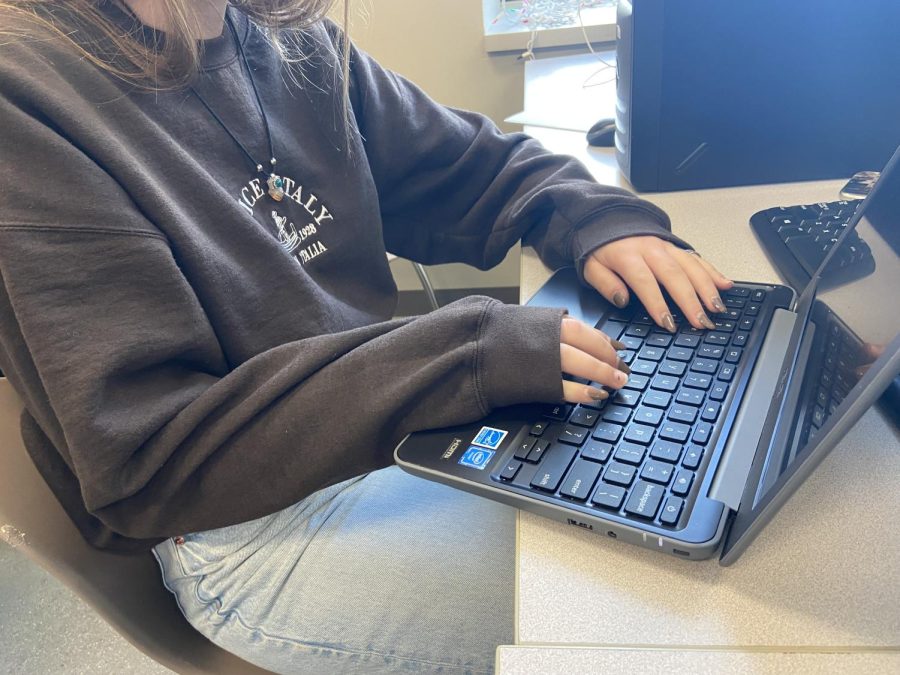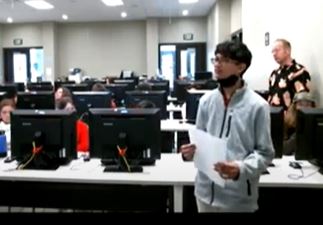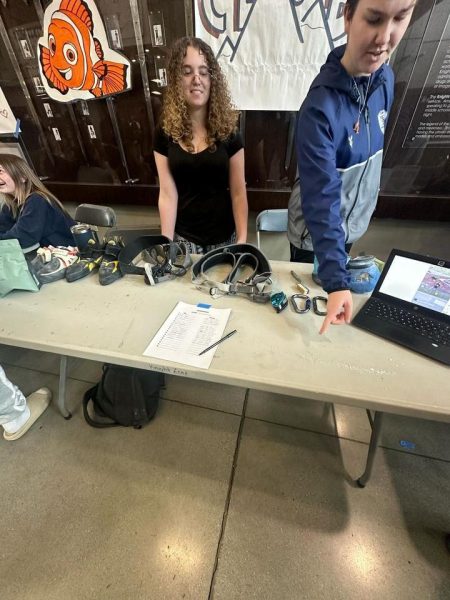How Technology Affects Students’ Learning
By Ella Tackett
When we were in elementary school, the concept of having your own personal computer to use in class seemed unbelievable. But now, in 2021, pulling a Chromebook out of your backpack every period is the new normal. Any student who has been back at school since the pandemic is aware of the dramatic increase in technology use in their day-to-day lives. The introduction of Chromebooks has caused a revolutionary change in the way we do schoolwork, and while there are of course benefits to this, there are also various caveats.
Being able to use Chromebooks every day is a great resource, as it allows for new learning possibilities, easy access to assignments for absent students, and ways to monitor student progress that are not accessible with a pen and paper. For students that may not have a personal computer at home, they now have access to their schoolwork and the internet through the Chromebook.
An issue that some kids may face is the lack of access to reliable WiFi at home, putting them back at a disadvantage. The effort to include every student is a very slippery slope, one that school officials have been struggling with for years. There is no obvious solution to fix every problem that inclusion brings to the forefront, but Chromebooks seem to be a step in the right direction.
Some argue that Chromebooks reduce waste, as printing out papers for 3,700 students every day is not good for the environment. While this is a good point and saving trees by reducing paper usage is a valid effort, electronic waste is also a pressing issue, and electronics are not as easily recycled as paper products are. Technology can also be unreliable in some cases. If a power outage were to occur, a rather frequent happening in Southern California, that could be detrimental to students attempting to do schoolwork from home. Projects, homework, and important information could be deleted if this were to occur.
Chromebooks not only affect students’ learning, but it also impacts our school as a whole. There are 25,000 Chromebooks in circulation just in the San Marcos Unified School District, up from 18,000 in June of 2020. Buying Chromebooks for every student to use is certainly a large strain on the school budget. The staff that has to deal with the input of broken Chromebooks is also a laborious situation. Kids forgetting to charge their computers or bring them at all is also an issue: the trip down to the library to replace it takes away from class time and extra Chromebooks are always in demand.
Technology as a whole is indisputably a good thing when it comes to enhancing student learning. No solution is without its concerns, but in this situation the pros far outweigh the cons. The addition of online programs into the curriculum has proven to assist in the development of academic concepts, and they are often more engaging to students. Technology has been revolutionary to society, it is only appropriate that it would be revolutionary to learning as well.

Ella is a freshman at SMHS and a writer for the website. She is involved in Newspaper Club, Debate Club, Model United Nations, and Academic League. She...

























Frog • Nov 16, 2021 at 1:41 pm
Good read
Jared • Nov 15, 2021 at 10:13 pm
Love this article Ella!
Yvonne Brett • Nov 9, 2021 at 2:05 pm
Great article Ella! I agree that each student having a Chromebook has been great in many ways, but the logistics of it all has put a tremendous strain on our computer technician as well as the library staff. Daily we have students bringing in their Chromebook with broken screens, missing adaptors, or software problems like internet connectivity. After troubleshooting problems we usually have to issue a replacement and send a tech request to our tech to get it fixed. The majority of the students are taking care of their device, but others don’t seem to care that we are loaning them an item that costs $290 to replace! District-wide this can really add up to quite a bit of money, especially when students move out of our district and fail to return their devices. One thing I would love to see is more accountablility from our students and an appreciation for these great tools that we are providing them.
Tony Cabral • Nov 4, 2021 at 11:58 am
Fantastic article. Very thoughtful. Thank you for being an advocate for technology in the classroom!